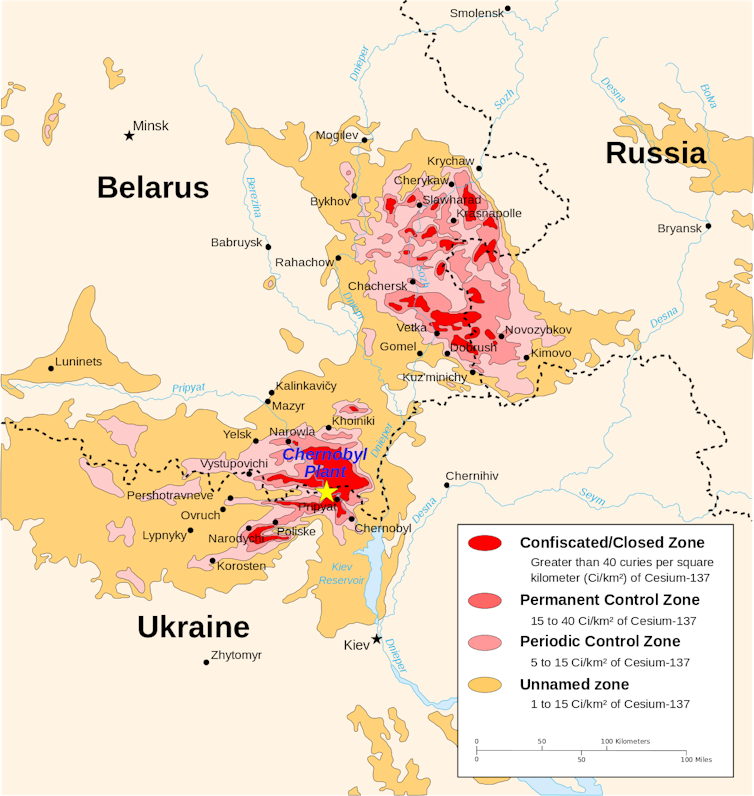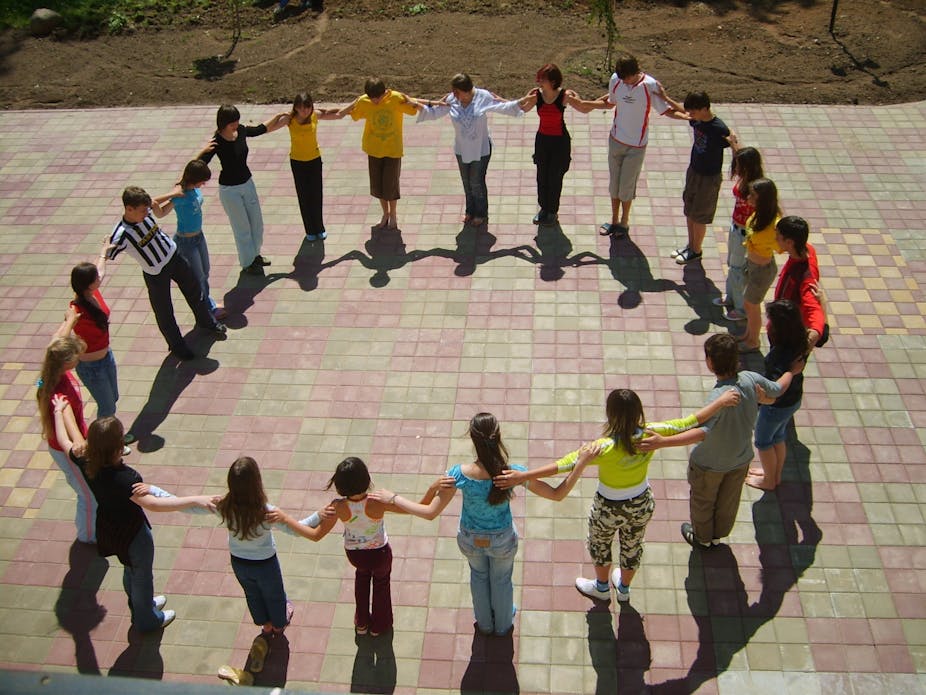Following the Chernobyl nuclear power plant disaster in Ukraine, in the former Soviet Union on April 26, 1986, humanitarian programmes were launched in the West that arranged for children from areas affected by radiological contamination to stay with families in other countries. The idea was to provide them with time away from a potentially contaminated environment and from contaminated food for a few weeks at a time to promote better health. Many of these schemes, known under the banner of Chernobyl children’s projects, are still running today.
Of Western nations Italy has been the most active in hosting children, having recuperated half of all the Chernobyl children from Belarus, Ukraine and Russia. The region most affected by fallout is Belarus, north of Ukraine, where more than a third of its population, including 500,000 children, live in contaminated areas. This amounts to a quarter of its territory. Almost three quarters of the children hosted by Italy were from Belarus.
Doctors from Italy were among the first to carry out surgeries for children who had thyroid cancer caused by radioactive iodine expelled by the stricken reactor. To try to prevent radiation-induced diseases in the future, Italy has extended a standing invitation to all children living in the contaminated territories. Surrounded by the Mediterranean and Adriatic seas, children in Italy have access to natural and radiologically inert iodine through breathing in sea air, swimming, and eating fresh seafood.
But Italy is also a country where the welfare state is built around the family – culturally, to send a family member to live in a care institution is seen as abandonment. This family-centric approach has made Italy the most active in hosting the Chernobyl children.
I should know: I was one of them. Between the ages of 11 and 14 I visited my host family in Lucca, Tuscany, three times as a child through the Chernobyl programme. My Italian host family visited me in Gomel, Belarus, several times and met my parents. We lost touch at some point, and only re-established this connection when I was studying abroad on a scholarship. I’ve since visited them as an adult twice – more now as a friend than as a Chernobyl child.

Twinning nations through human relations
However, while it may have begun as a humanitarian response to the situation those affected by Chernobyl faced in wake of the collapse of the Soviet Union, the act of hosting Belarusian children by Italian families has grown into a programme of fostering human relations.
Many families developed deep emotional attachments to the Chernobyl children they hosted, treating them as their own. As a result, some (if orphans) were adopted by their Italian families, some migrated to Italy to go to university, some if they met a partner migrated to Italy to marry, while others still moved for work, or later returned to Italy with their own families as tourists.
This phenomenon can be characterised as “kinning”, a concept used in transnational adoption and domestic care work. Compared to kinship relationship based on blood, kinning occurs when meaningful ties are built between strangers through emotional attachment. Kinning allows, for example, quality parenting to develop toward adopted children, and for quality domestic care for elderly people. In the context of the Chernobyl children and Italian families, kinning allowed children to keep coming to Italy continuously for recuperation, and influenced their life choices they made in to adulthood.
Italy left a significant imprint on me. It was my first time going abroad alone without my parents, and I experienced a new culture from living within it. I learned Italian (not very well), and when I stopped going to Italy I continued studying the language in Belarus, because I liked it. Many of my classmates were also going to Italian families, so it was very common for children my age.
My host father in Italy taught me to swim. My own mother never allowed me to have pets (except parrots), but in Italy they had a cat, which became my friend with whom I could play. All these little things build up a trail of memories for a child. I still know by heart my Italian host family’s birthdays.
When I hear Italian language spoken on the street, my blood runs faster – I feel so happy. When visiting somewhere new, I always search for an Italian restaurant. If I see Italians at a conference or anywhere I am, my heart melts and I want to approach them. Recently, I spoke to a colleague of mine who was an Iraqi refugee and moved to Sweden when she was young. She told me that hearing the Swedish language makes her feel the same excitement.

Fostering ties that bind us together
There are lessons to learn here for the migrant crisis that Europe faces today: rather than placing refugees and asylum seekers in camps, in detention centres, or settling them in urban ghettos, the approach of kinning could be used to engage with strangers and create connections.
Kinning is not a one-way relationship: the local population should feel a need to and interest in kinning a stranger. The task facing us is to help foster these needs and interests. If a local family has no children, they might adopt an unaccompanied child. If local residents have no family of their own, they can kin a newly arrived family. The approach of kinning has the potential to become a constructive and very human way of solving the social and political problems Europe faces.
To understand the importance of the personal connection in kinning, compare the Italian approach with the Swedish model, where Chernobyl children were recuperated in the summer camps to which Swedes traditionally send their children. By placing Chernobyl children in summer camp groups, there was less potential to form familial bonds with local Swedish families, and so transnational personal ties never developed between the Belarusians and Swedes to the same extent.
I attended a Swedish summer camp only once, after my experiences in Italy when I was 15. In Sweden I spent my time with other children from Belarus rather than with locals. And of course, the Swedes’ excellent English language skills meant that, although I was glad of the chance to practice English, there was little opportunity to learn Swedish and further deepen the bonds with that country.
In Italy, kinning has not only changed the lives of the children and families involved, but taken en masse the effect has forged ties between the Belarusian and Italian states. Many children majored in the Italian language, and now work in spheres such as humanitarianism, business, government and diplomacy. These now enhance the links between these countries, alongside organisations such as the Italy-Belarus Chamber of Commerce, the Association of Italian Entrepreneurs in Belarus, and the recently established Italy-Belarus Business Forum on the Green Economy, which seeks to create new business partnerships around alternative, non-nuclear, energy sources. Belarus celebrates a Year of Italian Culture, and among researchers, physicists from Belarusian institutions collaborate with the International Center for Theoretical Physics in Trieste. In the contaminated areas, young people speak better Italian than English.
Can kinning contribute to peace and stability over time through mutual respect and deep understanding of a different culture? Can people so kinned become the bridges that help unite a divided world? One can only speculate, but looking at the example of Belarus and Italy, hope remains.
Once, in 2010 when I graduated from university, I watched as an official from the EU, an Italian, came to visit the contaminated areas in Belarus where we lived to inaugurate a UN and European Commission-sponsored programme. Arriving at the appointed village, local Chernobyl children ran towards her, greeting her and speaking to her in Italian. She started to cry. The power of these human relations is real.

